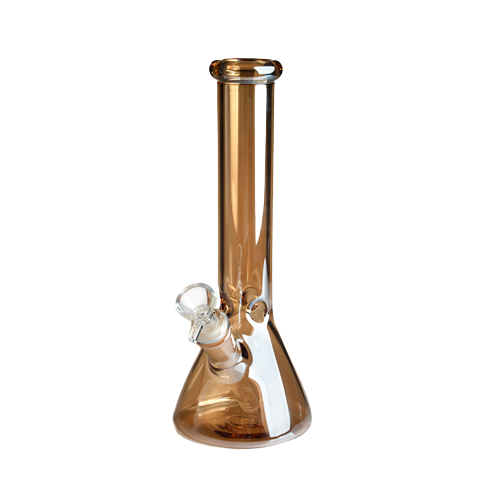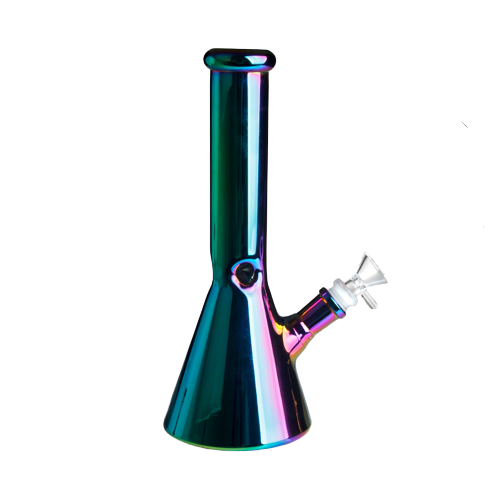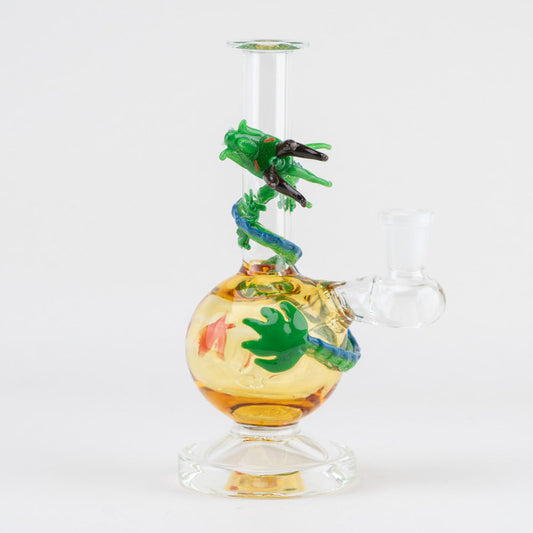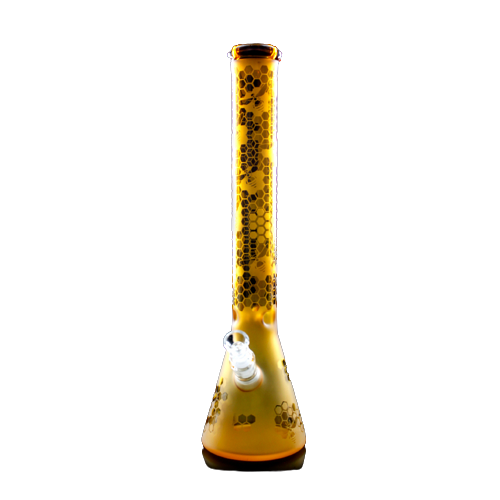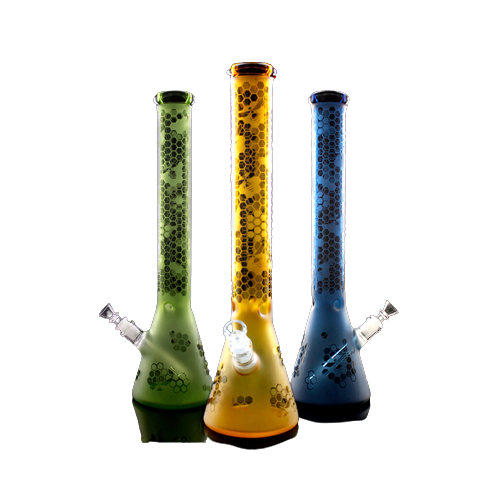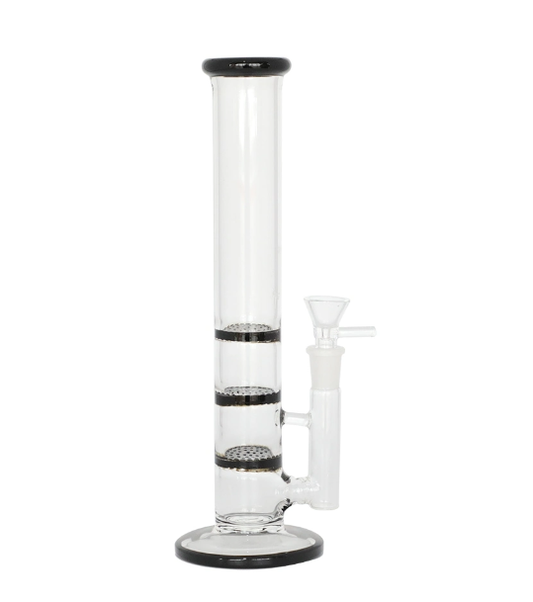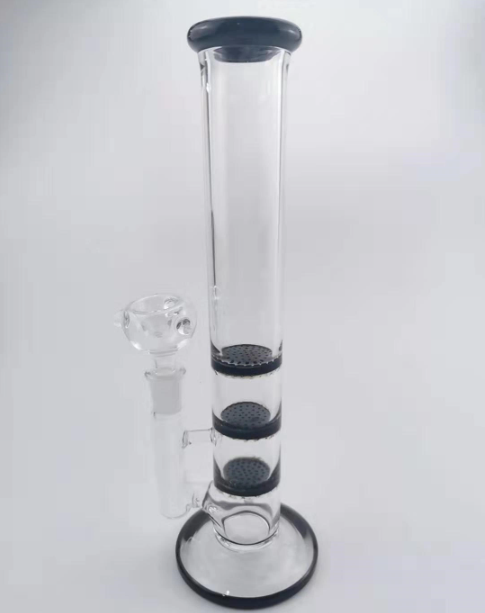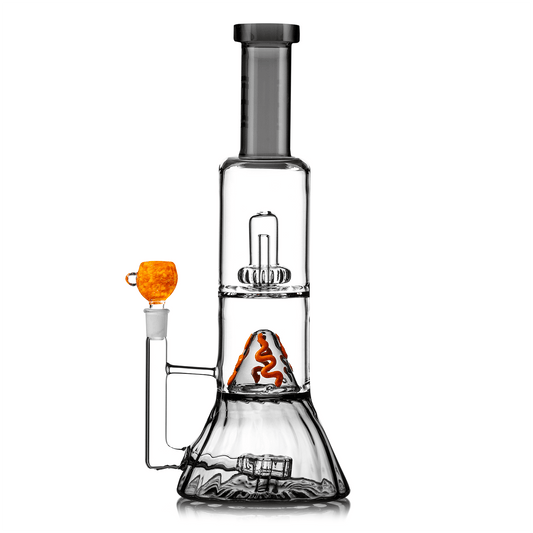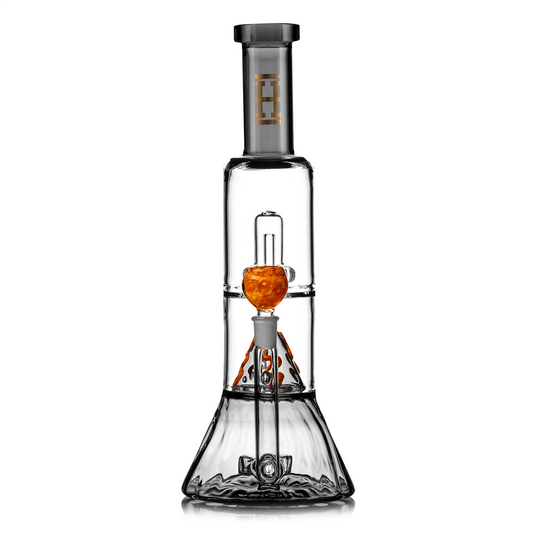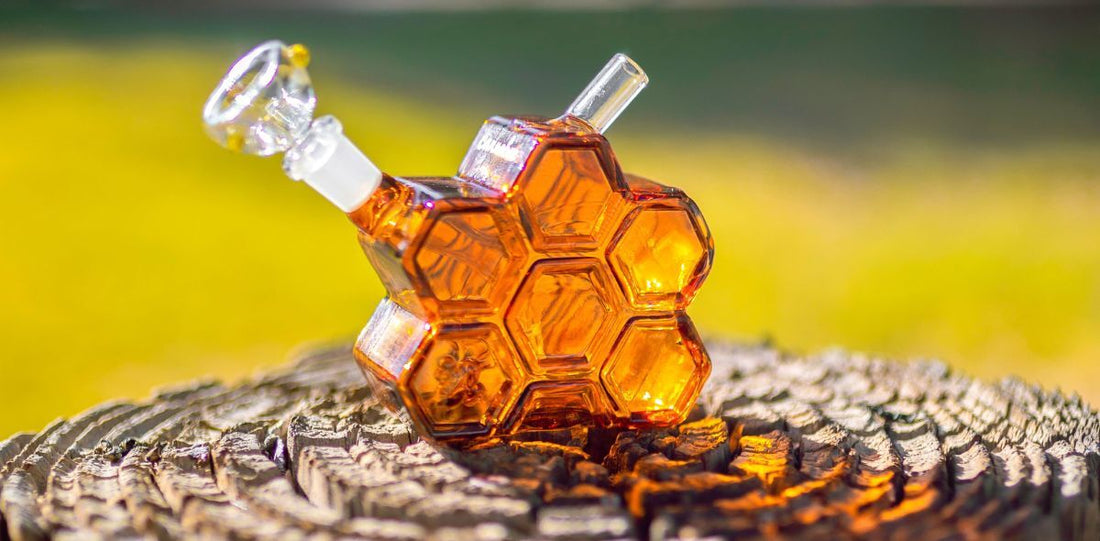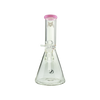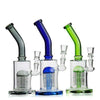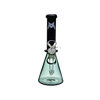Homemade pipes have become very popular in recent years, thanks to creative craftsmanship, various economic factors, and an enthusiasm for customized smoking experiences.
This DIY stuff offers smokers a unique medium to express their personality and creativity while also keeping their budget in check.
Their importance is more than just utility; they are symbols of imagination and artistry. Making them can be an enjoyable, satisfying, and budgetary experience with a huge list of methods to choose from.
Some of the best and most popular pipes are made from wood, fruit and vegetable materials, everyday objects, discrete pieces, and spare glass/ceramic vessels.
Now let’s teach you how to make a homemade pipe.
Materials Needed to Make a Homemade Pipe?
List of Common Materials and Tools for making homemade pipes:
Materials:
- Wood (e.g., briar, oak, cherry)
- Glass or ceramic vessels (jars, bottles, vases)
- Metal fittings (pipes, connectors)
- Clay or ceramic clay
- Fruits or vegetables (e.g., apples, carrots, potatoes)
- Bamboo stems
- Stones
- Clay or modeling clay
- Safe adhesives and sealants
Tools:
- Saw or carving tools
- Drills and bits
- Sandpaper and files
- Glass cutters (for glass pipes)
- Metalworking tools (for metal pipes)
- Brushes and paint for decorative finishes
Safety Precautions and Considerations:
Ventilation: Make sure that you have proper ventilation when working with materials like adhesives and paints so that you don’t inhale fumes.
Dust Control: Wear proper protective gear to minimize inhalation of dust or particles while sanding or carving materials.
Heat Resistance: Use materials that can withstand heat to avoid the release of harmful substances during smoking.
Always use materials that can bear heat to avoid the release of harmful substances while smoking.
Methods to Make a Homemade Pipe
#1. The Apple Pipe
Choose the right apple: Take a fresh, hard apple without marks or soft areas. Varieties like Red Delicious or Granny Smith work great.
Collect your tools: You will need a screwdriver or a knife, a pencil or a cylindrical object, and a piece of aluminum foil.
Prepare the apple: Wash the apple thoroughly. Then create two holes with the knife or screwdriver - one on the top (for the bowl) and one on the side (for the mouthpiece).
Carve the Bowl: Insert the pencil into the hole at the top to make out a tiny hole for your smoking material.
Create the Mouthpiece: At the hole on the side, create a path with the pencil to meet the bowl. This makes the mouthpiece.
Assemble the Pipe: Once you make the apple pipe, place the bowl with a small chunk of aluminum foil, ensuring that it’s smooth to allow the proper flow of air. Then fill the bowl with your smoking material.
Tips for Selecting the Right Apple:
- Choose a hard apple to make sure that it doesn’t break during crafting.
- Green apples work best because of their dense pulp and crispy texture.
Advantages of Apple Pipes:
- Simplicity - Apple pipes are quick and easy to create.
- Freshness - Smoking from an apple gives you a subtle, pleasant flavor.
Disadvantages of Apple Pipes:
- Fragility: Apple pipes can break or become unusable after a few uses.
- Limited Durability: They are not durable pipes as compared to the ones made from other materials.
Apple Pipes Safety Tips:
- Always clean the apple properly before use.
- Be careful while carving the apple so that you don’t injure yourself.
#2. Soda Can Pipe
Gather Materials: You need an empty can of soda, a sharp tool such as a screwdriver, a lighter, and your smoking stuff.
Prepare the Can: Wash the can properly to remove any residue. Let it dry completely.
Fashion the Bowl: On the side of the can, near the bottom, use the screwdriver to create a small indentation or depression for the bowl. This is where you'll place your smoking material. On the can’s side (just near the bottom), use the screwdriver to create a tiny depression or indentation for the bowl. This is where you will set your smoking stuff.
Poke Holes: On the opposite side of the can, near the top, use the screwdriver to poke a small hole. This serves as the mouthpiece. On the can’s opposite side (near the top), use your screwdriver to make a tiny hole that will serve as the mouthpiece.
Health Concerns Associated with Aluminum Cans:
Aluminum Inhalation: On heating, aluminum cans release a lot of harmful particles or fumes which if inhaled can cause serious health problems. And regular exposure to them can also cause respiratory issues.
Coating Concerns: Some cans have plastic or polymer coating which can release poisonous compounds when heated. This coating is not always visible but is usually present on the can’s inner surface.
Safety Tips:
- If you use a soda can for smoking, make sure that it’s cleaned and dried thoroughly to reduce any potential contaminants.
- Be informed of any potential health issues related to aluminum inhalation. Always take precautions to keep the exposure within the limit.
#3. The Pen Pipe
Gather Materials: You need a plastic pen, a metal tip, a lighter, and your smoking stuff.
Dismantle the Pen: Disassemble the pen carefully, removing the cartridge of the ink and any plastic components that may stop the airflow.
Prepare the Pen: Make sure that the barrel of the pen is free of any residual ink. Clean it properly if needed.
Create the Bowl: Place the metal socket or tip into one end of the pen barrel to prepare the bowl. This is where you will set your smoking stuff.
Form the Mouthpiece: At the pen barrel’s opposite end, make a small hole for the mouthpiece. This allows you to inhale the smoke properly.
Warnings About Using Plastic Pens:
Toxic Fumes: When plastic is heated, it can give out toxic fumes due to its combustion.
Inhalation of Residue: Residual ink or other substances present in the pen may be taken in if not cleaned properly, leading to health problems.
Safety Tips:
- If you want to use a plastic pen as a smoking pipe, make sure to use one that is made from non-toxic, heat-proof materials.
- Also, make sure that the pen is clean and free of any kind of ink or other particles before use.
#4. Bamboo Pipe
Select the Bamboo: Select a bamboo piece with a suitable diameter for the size of your pipe. Ensure that it’s not wet and is free of any signs of decay or cracks.
Cut the Bamboo: Using a saw, carve the bamboo to your desired length carefully, keeping one of the joints in place as it will serve as the bowl.
Clean the Interior: Make sure to remove any excess material from the interior of the bamboo, ensuring a pathway for the smoke. You can use a knife or drill for this task.
Create the Mouthpiece: At the bamboo piece’s other end, carve or drill a tiny hole for the mouthpiece. Make sure that it’s large enough for you to inhale with comfort.
Advantages of Bamboo Pipe:
Sustainability: Being a highly renewable resource, bamboo is a perfect and eco-friendly choice for making a smoke pipe.
Natural Aesthetics: Bamboo has a unique and elegant appearance, adding a nice and natural touch to your smoking experience.
Environmental Considerations:
- Bamboo is famous for its quick growth and harvesting ability without destroying the plant. This quality makes it an excellent option for those who are conscious about sustainable materials.
- Preferring bamboo over conventional pipes can reduce the environmental harms associated with manufacturing & disposal.
#5. Water Bottle Pipe
Prepare the Bottle: Rinse the water bottle thoroughly to remove any dirt and leave it to dry completely. Make sure that it’s contaminant-free.
Bowl Creation: Unscrew the bottle’s cap and make a small hole in the cap’s center using a sharp tool. Place a small aluminum foil into the hole and mold it into a bowl for your smoking material.
Mouthpiece: Make a small hole on the bottle’s side for the mouthpiece so that you can inhale the smoke comfortably.
Advantages of Using a Water Bottle:
Readily Available: Empty plastic water bottles are easily available, making this method super convenient.
Portability: Plastic water bottles are extremely lightweight and transportable, suitable for outdoor or other on-the-go settings.
Safety Tips Regarding Plastic Bottles:
Be careful about the heat-resisting quality of plastic as overheating it may release toxic fumes.
#6. The Aluminum Foil Pipe
Gather Materials: You need an aluminum foil sheet, a pencil or a similar cylindrical object, a lighter, and your preferred smoking material.
Prepare the Foil: Cut the aluminum foil in a rectangular shape, (roughly 4x6 inches).
Shape the Bowl: Fold the foil in half, then wrap the pencil with it to create a tiny cylindrical bowl that will hold your smoking material.
Mouthpiece: At the foil’s one end, make a tiny hole for the mouthpiece, through which you will take in the smoke.
Health Concerns Related to Using Tin Foil:
Inhalation of Toxic Fumes: Aluminum foil releases harmful fumes when heated which if inhaled can cause serious health risks and respiratory issues.
Mental Residue: Inhaling from aluminum foil may make tiny metal particles reach your system and cause serious health issues.
Safety Tips:
Don’t use aluminum foil for smoking regularly as it has many potential health risks. If you do it anyway, make sure that it’s clean and free from any contaminants or residues.
#7. The Metal Pipe
Constructing a Metal Pipe:
Gather Materials: You need a metal pipe or tube, a metal chamber or bowl for the smoking stuff, and some metal screens or mesh.
Design the Pipe: Mold the metal tube to your desired length, making sure that it’s straight and free from any obstructions. Fix the metal bowl to the tube’s one end which will serve as the smoking chamber.
Add Screens: Set a metal screen inside the bowl to prevent your smoking material from getting into the pipe.
Mouthpiece and Carb: Make a small hole in the tube for the mouthpiece, and if required, make another hole to control the airflow.
Durability and Portability: Metal pipes are great for their strength and durability. They can endure any kind of wear and tear, which makes them a long-lasting option. And, in terms of portability, they are very compact and easy to carry, making them ideal for use anytime.
Warning About Safety Concerns: Choosing safe, non-toxic metals is very important. Some metals can give out toxic fumes when heated, causing serious health problems. Make sure that your metal pipe is manufactured from materials such as brass or steel, famous for their safety when used as smoking tools.
#8. Ice Pipe
Prepare the Bottle: Rinse and dry the plastic bottle thoroughly. Ensure it's free from any contaminants.
Wash and dry the plastic bottle properly. Make sure that it’s free from any contaminants.
Freeze the Bottle: Fill the bottle with water, but do not overflow it. Keep it in the freezer and freeze until you get a solid ice cylinder.
Carve a Hole: Once frozen, remove the bottle from the freezer and run it under warm water to release the ice cylinder. Use a knife or scissors to carve a hole through the center of the ice, creating a pathway for the smoke.
Once frozen, take out the bottle from the freezer and wash it with warm water to free the ice cylinder. Make a hole through the ice’s center using a scissor or knife, clearing a pathway for the smoke.
Create the Bowl: Fix a plastic straw to the cap of the bottle and set the smoking stuff inside. Light it, and inhale the smoke through the straw.
Pros and Cons of Ice Pipes:
Pro:
Cooler and Smoother Hits: Ice pipes give a chilled smoking experience without any throat irritation.
Con:
Melting: The ice cylinder melts with time, leading to leakage of water and/or dilution of the smoking material.
Tips for a Smoother Experience:
- Make sure that the ice pipe is sealed so that water leakage doesn't happen.
- Use a wide straw to increase the airflow.
Safety and Legal Considerations of Homemade Pipes
Legalities of Homemade Pipes: The legal status of homemade pipes varies by country and region. Some places may allow the use and creation of homemade smoking tools for personal use while others may brand them as illegal. It’s important to understand and research local rules to make sure that compliance is there.
Encourage Responsible Use: Regardless of the legality, it’s important to motivate responsible usage. Always keep safety, health, and respect for local laws in mind. Be careful of the dangers related to certain substances, such as aluminum or plastic, and try alternatives like glass or wood.
Conclusion
So we hope that you have enjoyed this expert article on ‘How to make a homemade pipe’. Making homemade pipes gives smokers a personalized and budgetary experience. These creative crafts, from recyclable to fruit-based materials, give a great opportunity to enthusiasts for full expression and creativity.
Methods like soda can pipes, apple pipes, bamboo pipes, etc. give a variety of options for making personalized smoking instruments.
While these methods are budget-friendly, it’s important to be safe from the potential health problems related to some materials such as plastic or aluminum.
Grasping local regulations and promoting responsible use makes sure that there’s a balance between enjoyment, creativity, and safety in making and using homemade smoking tools.

